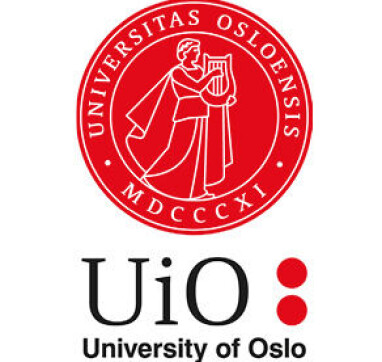THIS ARTICLE/PRESS RELEASE IS PAID FOR AND PRESENTED BY University of Oslo - read more

Many believe that next of kin have more influence over life-prolonging treatment than they actually do
Eight out of ten Norwegians believe that the next of kin are responsible for making decisions about life-prolonging treatment when patients cannot make decisions themselves. This is incorrect.
What are our attitudes and knowledge about key aspects of health legislation related to end-of-life treatment?
In two new surveys, researchers have asked a representative selection of the Norwegian population about this.
Palliative treatment rarely accelerates death
“Six out of ten Norwegians answered correctly that doctors are allowed to end ventilator treatment when the patient asks for it, even if it leads to the patient’s death,” Morten Magelssen says.
He is an associate professor at the Centre for Medical Ethics at the University of Oslo and has contributed to both studies.

“Seven out of ten also knew that doctors are allowed to give large doses of medication to relieve pain and other distressing symptoms, even if it may hasten the patient's death,” Magelssen says.
He explains that the fear that palliative treatment accelerates death is indeed greatly exaggerated. According to previous research, it happens very rarely.
Treatment is the doctor's decision
In one of the surveys, the researchers asked a sample of the Norwegian population to take a stand regarding the claim:
"When the patient can no longer make decisions about treatment, it is the patient's next of kin who makes the decision."
“Eight out of ten responded ‘yes’. Only one out of ten answered ‘no’, which is actually the correct answer to the question,” Magelssen says.
When the patient cannot make decisions about their own treatment, the next of kin have the right to be involved in decisions about their health care. The involvement should consist of expressing what the patient themself would have wanted.
Widespread misconception
However, according to the Norwegian Patients' Rights Act, the decision itself is unequivocally assigned to the patient's doctor.
“In the study we identified a widespread misconception. Many seemingly believe that the next of kin have a far more central role – and a far greater responsibility – in decisions regarding life-prolonging treatment than they actually have according to the law,” Magelssen says.
He suggests that in order to prevent misunderstandings or conflicts, doctors should clearly communicate the role and rights of the next of kin. They should explain where the responsibility lies.
Tension between the law and people's perceptions
The researchers also investigated the importance people placed on the next of kin's views when there is disagreement about treatment.
They presented a scenario of a patient with severe dementia and asked:
"Imagine that the doctor and nurses think that treatment ought to be stopped. They discuss this with the patient's closest next of kin. The next of kin wants the treatment to continue, so that the patient will live on. How much weight should the next of kin's own view be accorded here?"
One in ten believed that the next of kin's opinion should have decisive weight, that the next of kin should have the final say. Depending on how the patient's previously expressed wishes were described, nearly half believed that the relatives' opinion should carry significant weight.
Magelssen explains that there appears to be a tension here. It exists between the law and the general public's widespead perception that the wishes of the relatives should carry significant or even decisive weight. The law clearly states that the doctor makes the decision based on the patient's wishes.
“The surveys show what the Norwegian population believes the law says, and provides an indication of how they think things should be,” he says.
Treatment could prolong a painful death
Since the 1950s, medical treatment has given increasing opportunities to extend people's lives. This has resulted in a new type of ethical challenge: When are healthcare professionals in danger of prolonging life beyond what is good for the patient?
Treatment limitation means discontinuing or not initiating treatment that could potentially prolong the life of a seriously ill patient.
“This decision is made when the patient requests it, or when it is considered to be what is best for the patient,” Magelssen says.
Treatment can encompass various interventions such as ventilator support, dialysis, intensive care, antibiotics, fluid and nutrition therapy. A decision to not resuscitate the patient in the event of cardiac arrest is also an example of treatment limitation.
“If too much treatment is given, we risk prolonging a painful death or a life with a lot of suffering,” Magelssen says.
Treatment limitation can lead to ethical challenges
“The survey revealed that a large majority, almost nine out of ten, supported the principle that in certain situations, it may be appropriate to discontinue or not initiate life-prolonging treatment. Only four per cent disagreed,” Magelssen says.
He explains that treatment limitation is clinically, ethically, and legally accepted. However, this does not prevent difficult decisions, disagreements, and ethical dilemmas from arising at times.
“Matters about ‘when enough is enough’ or treatment limitation are the most frequent ethical problem brought up in clinical ethics committees. These committees exist in all healthcare institutions and in around 20 municipalities in Norway. That is why researching this topic is impotant,” he concludes.
References:
Aarseth et al. Befolkningens kunnskaper og holdninger om beslutninger ved livets slutt (The population's knowledge of an attitudes towards end-of-life decisions), Det norske medicinske Selskab , 2023.
Wikstøl et al. Citizen attitudes to non-treatment decision making: a Norwegian survey, BMC Medical Ethics, vol. 24, 2023. DOI: 10.1186/s12910-023-00900-5

This article/press release is paid for and presented by the University of Oslo
This content is created by the University of Oslo's communication staff, who use this platform to communicate science and share results from research with the public. The University of Oslo is one of more than 80 owners of ScienceNorway.no. Read more here.
See more content from the University of Oslo:
-
Queer opera singers: “I was too feminine, too ‘gay.’ I heard that on opera stages in both Asia and Europe”
-
Putin’s dream of the perfect family
-
How international standards are transforming the world
-
A researcher has listened to 480 versions of Hitler's favourite music. This is what he found
-
Researcher: "AI weakens our judgement"
-
New, worrying trend among incels, according to researcher





































